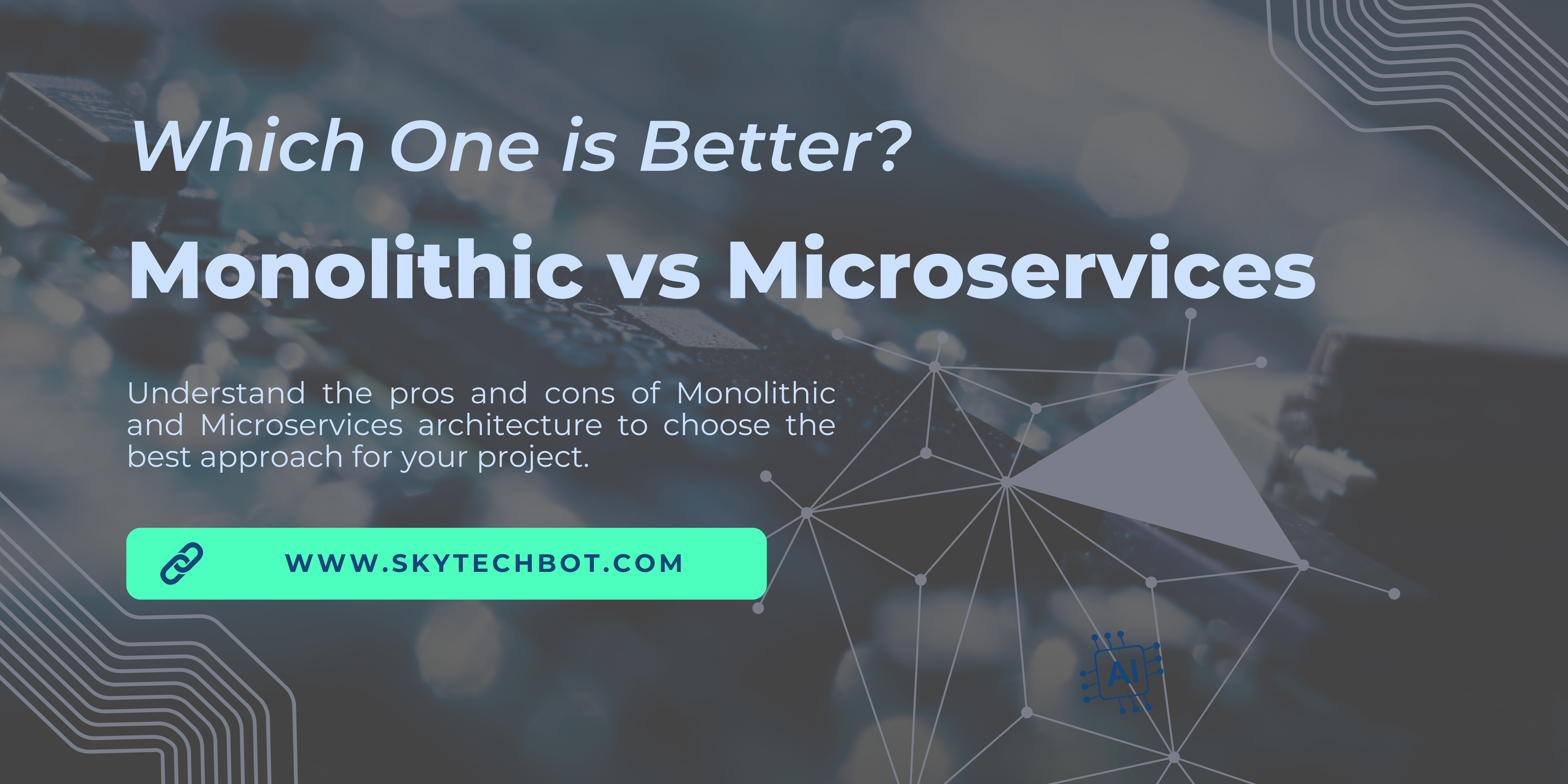Choosing the right software architecture is crucial for the success of any application. The two most common approaches are Monolithic and Microservices. Each has its advantages and challenges, making it important to understand which one fits your needs best.
In this guide, we’ll explore the key differences, benefits, and real-world applications of both architectures to help you make an informed decision.
What is Monolithic Architecture?
Monolithic architecture is a traditional software design where all application components (frontend, backend, database, and business logic) are tightly integrated into a single codebase.
Key Features of Monolithic Architecture:
- Single Codebase: Everything is built in one project.
- Unified Deployment: The entire application is deployed as a single unit.
- Shared Resources: All components share memory and databases.
- Simple Development: Easier to build and manage for small projects.
What is Microservices Architecture?
Microservices architecture divides an application into small, independent services that communicate via APIs. Each service is responsible for a specific functionality.
Key Features of Microservices Architecture:
- Decentralized Components: Each service has its own database and logic.
- Independent Deployment: Services can be deployed separately.
- Scalability: Different parts of the application can be scaled independently.
- Technology Flexibility: Each microservice can use different programming languages and frameworks.
Monolithic vs. Microservices: A Quick Comparison
| Feature | Monolithic | Microservices |
|---|---|---|
| Code Structure | Single Codebase | Multiple Small Services |
| Scalability | Limited | Highly Scalable |
| Development Speed | Faster for small projects | Better for large projects |
| Maintenance | Harder as application grows | Easier with independent services |
| Deployment | Entire application at once | Individual services can be deployed |
Which Architecture Should You Choose?
Choose Monolithic if:
- You are building a small or simple application.
- You want a straightforward development process.
- Your team is small, and maintenance is manageable.
Choose Microservices if:
- You are building a large-scale, complex application.
- You need better scalability and flexibility.
- You want independent teams working on different services.
Real-World Use Cases
- Monolithic Example: Small businesses and startups often start with a monolithic approach (e.g., early-stage e-commerce platforms).
- Microservices Example: Large companies like Netflix, Amazon, and Uber use microservices for scalability.
Final Thoughts
Both Monolithic and Microservices architectures have their pros and cons. Your choice should depend on your project size, scalability needs, and team expertise.
Need Help Deciding?
Still unsure which architecture is best for your project? Contact our experts for a free consultation!
Frequently Asked Questions (FAQs)
1. Is Monolithic architecture outdated?
No, monolithic architecture is still useful for small applications that do not require extensive scaling.
2. Can I migrate from Monolithic to Microservices?
Yes, but it requires careful planning and refactoring of your application.
3. Do Microservices increase costs?
Yes, microservices require additional infrastructure, monitoring, and team coordination.
4. What programming languages are best for Microservices?
Common choices include Node.js, Python, Java, and Go.
Want to build a scalable application? Let’s discuss your project today!


